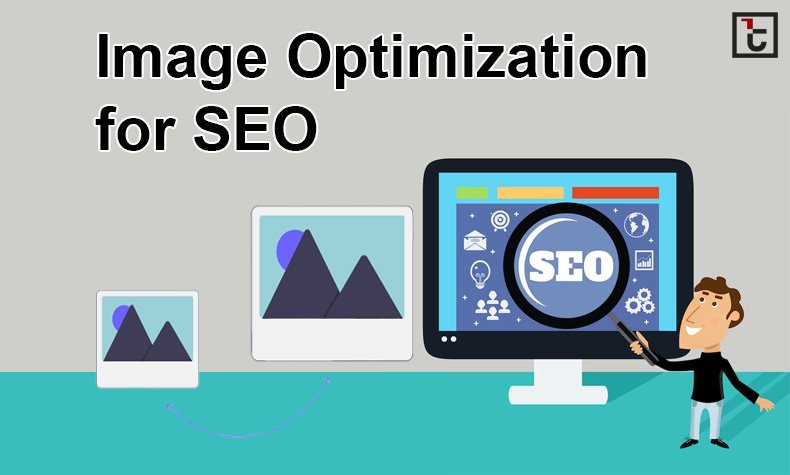Image optimization is now essential to SEO. Photos on your website may boost search engine rankings as well as aesthetics. This in-depth tutorial covers image optimization for SEO, including why it matters, recommended practices, and tools to help you succeed. Before discussing image optimization, let’s discuss why SEO relies on it.
Poorly optimized images can significantly impair your website’s loading performance. Slow websites score lower in Google search results because page speed is a factor.
Why Image Optimization Matters in SEO
Before delving into the specifics of image optimization, let’s understand why it is a critical factor in SEO.
Page Loading Speed:
Images that are not properly optimized can drastically slow down your website’s loading speed. Since Google considers page speed as a ranking factor, slow-loading websites tend to rank lower in search results.
User Experience:
User experience (UX) plays a pivotal role in image optimization for SEO. High-quality, fast-loading images enhance UX, keeping visitors engaged and reducing bounce rates. Properly optimized images ensure accessibility, benefiting all users, including those with disabilities. As images contribute to the overall feel of a website, their optimization directly impacts how users perceive and interact with your site, ultimately influencing its SEO performance.
Image Search:
Many users turn to image search engines, like Google Images, to discover content. Optimized images are more likely to appear in image search results, driving additional organic traffic to your website.
Accessibility:
Proper image optimization ensures that your website is accessible to all users, including those with disabilities. This is recommended practice and can boost SEO rankings.
After understanding image optimization’s necessity, let’s look at effective practices to assist you succeed.
Best Practices for Image Optimization

Choose the Right Image Format
Web image optimization begins with choosing the right format. The most prevalent picture formats are JPEG, PNG, and GIF. Here’s when to use each:
- JPEG: Ideal for photographs and images with many colors. JPEG offers a good balance between image quality and file size compression.
- PNG: Best for images with transparency or simple graphics. PNGs have higher quality but can result in larger file sizes.
- GIF: Suitable for simple animations but not recommended for static images due to limited color support.
Choosing the right format ensures that your images look good while keeping file sizes manageable.
Compress Images
Compression decreases image file size without affecting quality. Smaller file sizes lead to faster loading times, which can positively affect your SEO rankings. You can use online tools, standalone software, or content management system (CMS) plugins to compress your images. Popular options include TinyPNG, ImageOptim, and Smush for WordPress users.
Resize Images
Make sure your images are appropriately sized for their intended display on your website. Uploading excessively large images and scaling them down with HTML or CSS can increase page load times. Use image editing software or your CMS’s image settings to resize images before uploading them. This not only enhances loading speed but also saves storage space on your server.
Use Descriptive File Names
When saving your image files, opt for descriptive, keyword-rich filenames. Instead of generic names like “IMG123.jpg,” use names like “red-leather-handbag.jpg” for an image of a red leather handbag. Descriptive file names help search engines understand the content of the image and can improve SEO.
Add Alt Text
Alt text, short for alternative text, is a concise description of an image that is displayed if the image cannot be loaded or is read aloud by screen readers for visually impaired users. Alt text serves multiple purposes:
- Accessibility: Assisting those with visual impairments in recognizing the contents displayed inside a picture.
- SEO: Search engines rely on alt text to understand the context of images. Use descriptive alt text that includes relevant keywords to improve your SEO.
Utilize Image Captions
Image captions provide context for both users and search engines. They help users understand the relevance of the image to the surrounding content. Additionally, captions can be a great place to naturally incorporate keywords, further enhancing SEO.
Implement Lazy Loading
Lazy loading is a technique that defers the loading of off-screen images until the user scrolls down to them. This approach prioritizes the loading of images that are currently in the user’s viewport, reducing initial page load times. Lazy loading can be implemented through JavaScript or by using HTML attributes like `loading=”lazy”`.
Optimize Image Sitemaps
An image sitemap is a specialized XML sitemap that provides search engines with additional information about the images on your website. Creating an image sitemap and submitting it to Google Search Console can help search engines discover and index your images more efficiently.
Consider Responsive Images
If your website is responsive (adapts to different screen sizes), use responsive images to ensure that users on mobile devices receive appropriately sized images for their screens. This helps maintain a positive user experience across various devices.
Monitor Image Performance
Regularly assess the performance of your images using various tools and metrics. Google PageSpeed Insights, GTmetrix, and Google Analytics can provide insights into how images are affecting your page loading times and overall website performance.
Beware of Copyright
It is important to constantly use photos for which one possesses proper licensing rights. Avoid copyright violations by using images you’ve created, purchasing stock photos, or using images with appropriate licenses. Copyright violations can lead to legal issues and negatively impact your website’s credibility.
Use Structured Data (Schema Markup)
Implementing structured data (schema markup) for images can provide additional information to search engines. This structured data can increase the chances of your images appearing in rich search results like Google’s Image Pack or enhance the visibility of your content in other search engine features.
Conclusion
SEO image optimization is a complex process that may improve your website’s search engine results and user experience. This detailed tutorial will help you increase page loading speed, accessibility, and SEO by optimizing your photos. SEO is continual, thus image optimization should be part of your content production cycle.
To increase your website’s search engine rankings, monitor its performance, use new methods, and keep up with SEO developments. Effective picture optimization is essential for online success in today’s visual-heavy digital world. Start using these recommended practices immediately to make your website more search engine- and user-friendly.


